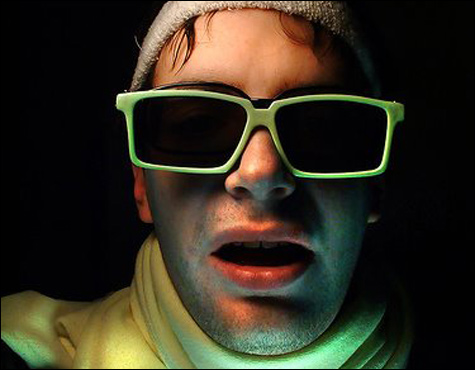
Girl Talk: The growing success of music like this keeps pro-copyright lobbyists awake at night.
|
My introduction to free culture happened sometime last month when I attended an event sponsored by the Harvard Free Culture organization. An organization called Digital Freedom was hosting a debate between a mouthpiece for NBC, a mouthpiece for the Consumer Electronics Organization, and Wendy Seltzer, a Northeastern professor and local free culture exponent. The three of them said their pieces: the Consumer Electronics Organization and Ms. Seltzer favored freedom of information; NBC favored financial viability. I received a complimentary can of soda, a shirt, sticker, and pen, and left feeling informed but confused; it didn’t seem like the best introduction to a concept I’d heard so much about. Absolute freedom of information sounds tantalizing, sure, but it also seems like an impossibility to confront it without cash flow coming into the equation. As I walked out of Harvard Yard, I came to few conclusions other than “free culture” is a concept that required some unraveling. I began to read up, and soon discovered that free culture is, sure enough, hard to pin down. Essentially, proponents of free culture argue that copyright law hasn’t evolved to match advancements in technology. As a result, courts continue to favor the panicked content providers — the record labels, movie studios, and publishing companies — in lawsuits they file against their own customers. At best, free culture advocates argue, this is an unjust legal situation. At worst, the discordance between the laws and our technologies is going to do a serious number on the creation and support of art in America.
As nebulous as free culture is, however, you experience it all over the place. Popular file sharing communities (see OiNK and Demonoid, arguably the internet’s two most popular file sharing centers) are being shut down and wave after wave of their uses are being sued. Radiohead and Nine Inch Nails have left their record labels to make music outside of the industry’s limitations, the former giving away their newest album for free (more or less). A seventeen year-old received a free car and a consulting job in exchange for permitting Apple’s iPhone to work on networks other than AT&T. Musicians whose content consists of nothing more than the mixed-up content of others are filling venues across the country. YouTube, and innovations like it, such as Flickr, Google Video, and sendspace have changed the ways people view and create content and, perhaps more importantly, how much they feel they should pay for it.
A stuffy, abbreviated history of American copyright law, courtesy mostly of Wikipedia:
―1790: America enacts its first federal copyright act. It permits “maps, charts and books” to be copyrighted for seventeen years, with an option to renew if the creator is still alive. Until that period of time expired, people had to get an author’s permission to reproduce his maps or anything else he created with his printing press.
―1909: The copyright period is extended to 28 years and limited to works that have a notice of copyright ― i.e., a little note saying “this work is copyrighted!”― affixed to them.